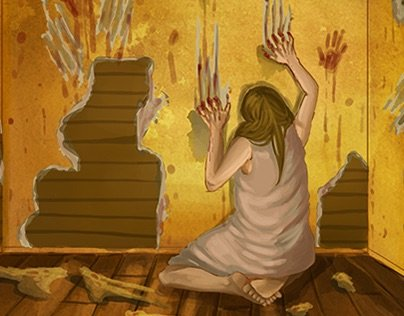By Nasima Akther
“The Yellow Wallpaper “ is a short story written by the American feminist writer Charlotte Perkins Gilman (1860-1935), exploring themes of feminism, mental illness and therapeutic treatment. The author has written many famous stories, and this one centers around a tale of mental breakdown, and some disturbing truths about 19th century society.
The tale is told by a female narrator who suffers from what is now known as postpartum depression. She tries to reach out for help, but her paternalistic husband and brother, both known to be high-ranking physicians, believe her problems to be caused by stress and the “temporary nervous depression” of a new mother. They refuse to properly address the issue, and instead confine her to a former nursery room with bars on its windows. She is treated like a child and a prisoner.
To alleviate her distress she starts to write, but is forbidden this activity by her husband. During the 19th century, woman’s works of literature were seen as anti-domestic and sentimental. The narrator is already mentally ill, but being deprived of writing—which for her was a therapeutic form of self expression—will force her to fall farther into a state of psychological imbalance. Despite her husband’s protests, she continues to write, but without his knowledge. As the story moves forward, she writes less and less and the reader struggles to understand her . . . an indication of her gradual descent into insanity.
Throughout this story, the narrator is obsessed with her room’s yellow wallpaper. She claims to absolutely despise it due to its inability to harmonize with her aesthetic preferences. As time progresses, she starts to see movement in the wallpaper. This illusion gradually transforms into her seeing the image of a woman creeping at night.
This vision continues for countless nights. The figure is trapped in the wallpaper, and can’t seem to escape. By the end of the story, our protagonist is convinced that she is the woman living in the wallpaper. To release the imprisoned figure, the narrator tears the wallpaper from the wall, thus releasing herself from confinement.
In summation, the fictional narrator of “The Yellow Wallpaper” was ill. Her environment was the main cause of her situation. She lived in a misogynistic society where women were faced with medical and societal oppression. Women were largely considered mentally weak, fragile, and ignorant. Fictionalizing these facts, then displaying the heroine/narrator’s slide towards insanity was Gilman’s way of protesting these stereotypes.
